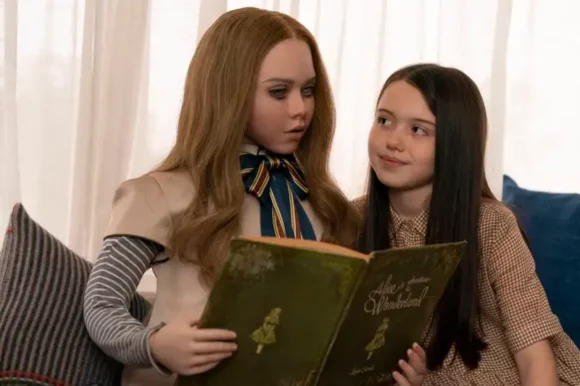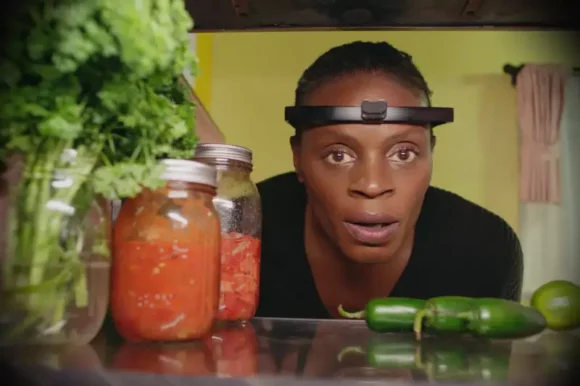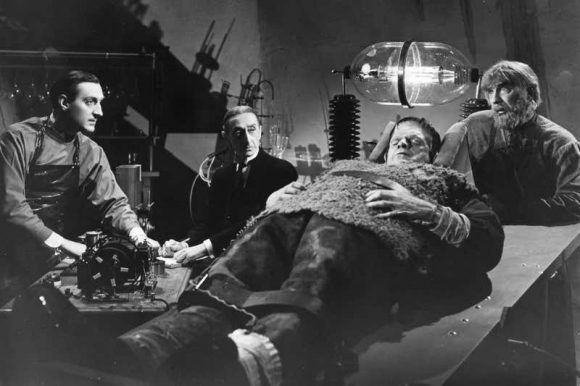Watching Andrew Legge’s film Lola for New Scientist, 12 April 2023
Two sisters, orphans, play among the leavings of their parents’ experiments in radio, and by 1938 the one who’s a genius, Thomasina (Emma Appleton), is listening to David Bowie’s “Space Oddity” on a ceiling-high television set that can tune in to the future.
The politics of the day being what it is, Thom’s sister Martha (Stefanie Martini) decides that this invention (named Lola after their dead mother) cannot remain their personal plaything — it belongs to the world. With the help of Sebastian, a sympathetic army officer (soon enough Martha falls in love with him) the sisters are soon collaborating with British intelligence to fox Nazi operations a day before they happen.
Drunk on success, Thom lets her ambition get the better of her, and starts sacrificing the civilians of tomorrow in order to draw out the Wehrmacht. When a horrified President Roosevelt catches wind of this, it spells the end of Churchill’s efforts to draw the US into the war against Hitler.
Good intentions, ambitious plans and unintended consequences usher the world into Hell in this often stunning piece of micro-budget science fiction. As high concept movie ideas go, Lola’s counterfactual 20th-century history is up there with Memento and Primer and Source Code.
Attentive readers will feel a “but” hovering here. For some reason the director and co-writer Andrew Legge took a day of rest after fleshing out this winning idea; he seems neither to have finished the script, nor given his actors much directorial guidance. Lola is more a short story narrated to a visual accompaniment than a fully fledged film. Thom and Mars are supposed to be nice 1930s gals transfigured by their access to glimpses of 1960s pop culture — but it’s impossible not to see them for what they are, personable young actors from the 2020s let loose to do their thing in front of the camera.
This makes Lola a good movie, rather than a great one — and it’s a shame. Some extra scriptwork and a spot of voice coaching would have added hardly anything to Lola’s admittedly tight budget. In 2009, Legge made The Chronoscope, a 20-minute foray into the same territory. Lola is more solemn than that short outing, but no more serious, as though Legge were intimidated, rather than inspired, by the possibilities offered by the feature format.
Elsewhere, the film’s resources are deployed with flair and ingenuity. The film is an historically and technologically impossible but highly convincing assembly of found footage and home movie. (Among Thom’s other incidental inventions is a hand-held camera that records sound.) Famous radio broadcasts of the period are repurposed to chilling effect. (Lola’s “Battle of Britain” is not our battle of Britain). The Zelig-like manipulations of newsreel footage are fairly crude in purely technical terms, but I defy you not to gasp at the sight of Nazi invaders waving their Swastika over a bombed-out London, or Adolf Hitler being driven in state down the Mall. And Neil Hannon (the maverick musical talent behind The Divine Comedy, not to mention Father Ted’s “My Lovely Horse” song) has a quite indecent amount of fun here, cooking up the beats of a counterfactual 1970s fascist Top 10.
These days the choice confronting British and Irish filmmakers is stark: do you want to make your movie as quickly as possible, on the lowest possible budget, get it seen, and generate interest? Or do you want to spend twenty years in development hell, working with overseas production companies who don’t know whether they can trust you, and — with many millions of dollars on the line — are likely to homogenise your project out of all recognition?
I wish Lola had impressed me less and involved me more. But in a business as precarious as this one, Legge’s choices make sense, and Lola is an effective and enjoyable industry calling card.










